Versuchen GOLD - Frei
Flowering Bonsai
The Gardener
|June 2017
Although flowering bonsai are very popular in some regions of the world, particularly in Japan and the USA, beautiful flowering bonsai in South Africa are fairly rare. Most our indigenous trees do not produce huge masses of flowers like many of the trees in Japan, and the few that do are not really suited for bonsai. One of the most commonly used exotic species is the bougainvillea, while azaleas are also quite popular.

To grow bonsai that produce flowers or fruit you need to understand the growth patterns of the species you are using. Also, be aware that although you can reduce the size of the leaves and branches of a tree, the flowers and fruit will remain the same size. The trick is to select a species that has quite small flowers to begin with.
Some species, like the bougainvillea, produce flowers at the ends of new shoots. This is important to know because if you use the normal technique of constantly cutting back the shoots to retain the shape of the tree, the flowering bits constantly get cut off so no flowers will develop. The longer branches need to be allowed to grow out a bit, which then breaks the shape and style you have taken so long to achieve. Flowering bonsai should be cut back quite a lot shortly after a crop of flowers has wilted and died. This gives the new buds time to develop before the next flowering season. Prune the whole tree at the same time so that the regrowth is even all over the tree. If you leave one or two shoots untrimmed all the nutrients will go to those shoots and the tree will grow unevenly.
Diese Geschichte stammt aus der June 2017-Ausgabe von The Gardener.
Abonnieren Sie Magzter GOLD, um auf Tausende kuratierter Premium-Geschichten und über 9.000 Zeitschriften und Zeitungen zuzugreifen.
Sie sind bereits Abonnent? Anmelden
WEITERE GESCHICHTEN VON The Gardener

The Gardener
Preserving apples
The end of the apple season means that apples need to be preserved for the next six months until the next harvest is ready.
3 mins
July/August 2025
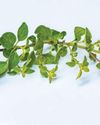
The Gardener
Golden Oregano
Origanum vulgare ‘Aureum’, as its name suggests, is golden yellow in full sun and cool weather. These bright herbs are highly fragrant, with a classic oregano taste and aroma, and are often used in the kitchen for pasta and pizza. In summer, the yellow leaves will be covered with small pink and purple flowers.
1 min
July/August 2025
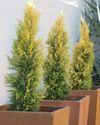
The Gardener
Potting up a conifer
Conifers generally are well-behaved plants with interesting, evergreen foliage and mostly formal and neat growth habits. This makes them stately candidates for roomy containers.
1 mins
July/August 2025
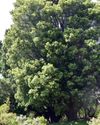
The Gardener
Enduring and venerable trees
There cannot ever be a good reason not to plant a tree, and somewhere there is just the right tree for you...
3 mins
July/August 2025
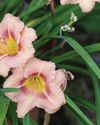
The Gardener
Daylilies make a comeback
Daylilies are making a comeback in 2025 with even more shapes, twists, ruffles, pleats, picotees, curves, and stunning colours and colour combinations. There are singles and doubles, big and small flowers, each unique, and yes, they only last a day! They do, however, have another flower bud just behind that one, ready to show off the next day.
1 min
July/August 2025

The Gardener
How to make a fat ball
Some birds love a fat ball in winter to boost their energy levels. These are easy to make and a fun project to do with the kids.
1 min
July/August 2025

The Gardener
The Princess and Obsession
It only takes two wonderful modern hybrids of old garden favourites to prepare a garden and containers for an unforgettable spring performance.
1 mins
July/August 2025
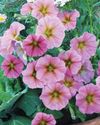
The Gardener
Pink and pretty
Pink colour shifters with hot appeal...
2 mins
July/August 2025

The Gardener
GROW the WALL
If you want lots of flowers in plantable concrete retaining wall blocks or lush stems and foliage cascading over dry stone walls, we have good plant suggestions for you!
5 mins
July/August 2025

The Gardener
Winter indoor plant care
Winter can be a tough time for your houseplants; a drop in natural light, drier air, and cold drafts can all influence their lush appeal. As plant lovers, spending more time indoors in winter creates opportunities to keep a close eye on your leafy companions and make some changes to avoid these common winter blues.
1 min
July/August 2025
